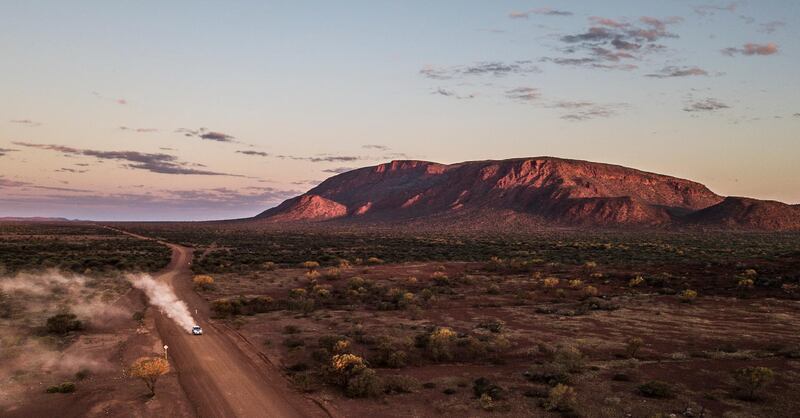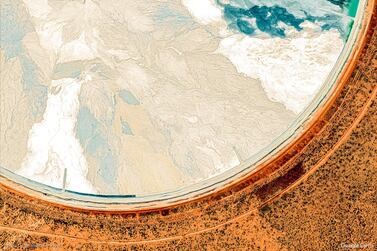Scientists discovered in January that Western Australia is home to the world's oldest crater, a major scientific breakthrough that shone a light on a state already famous for its unique physical attributes. Yarrabubba Crater is merely one of a host of extraordinary natural phenomena in WA, a remarkably large state that has 32 times the land mass of the UAE. From waterfalls that defy gravity, and pink lakes created by unique conditions, to a surfing sensation made from rock and a valley decorated by "beehives" the size of shopping centres, here are some of WA's most striking attractions.
Yarrabubba Crater
Few West Australians had heard of Yarrabubba until this January. That is when scientists from WA's Curtin University announced their research had confirmed it was the world's oldest meteorite crater, created by an impact 2.22 billion years ago. They dated it by examining crystals inside rocks at the crater.
The scientists say this meteorite impact may have aided in ending the Earth's ice age at that time. Unlike many younger craters, this site is not perfectly formed, having been eroded over an incredible period of time. The main physical marker left behind is a small mound called Barlangi Rock, about 70 kilometres south-east of the tiny mining town of Meekatharra in WA's midwest region. But Yarrabubba's immense significance is linked to its historical and scientific importance, rather than its aesthetic value.
Mount Augustus
Uluru, or Ayers Rock, is one of Australia's best-known landmarks – a gargantuan, deep-red monolith that dominates a flat plain in the Northern Territory. Yet the biggest rock in Australia – the largest monolith on the planet – is located in WA, about 450km east of the small coastal town of Carnarvon.
Called Burringurrah by the Wadjari Aboriginal people who live in this area, Mount Augustus is 1,100 metres tall, more than 8km long and covers almost 4,800 hectares of land. Not only is it more than twice the size of Uluru, but at its core is a monumental granite rock that is 1.65 billion years old, giving it a far longer history than Uluru.
Bungle Bungles
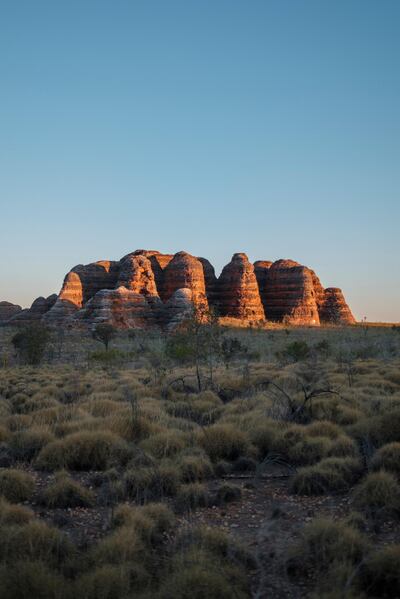
It seems like a setting from a science fiction movie. From out of a flat, dusty landscape rises a cluster of what look like gargantuan beehives, some up to 300m tall. But this is not the result of CGI graphics – instead, it is a rare group of giant sandstone rocks decorated by orange and black stripes.
This extraordinary formation is the chief attraction of Purnululu National Park, about 200km south of the town of Kununurra in WA's far north. Although they were formed about 250 million years ago, the Bungle Bungles are in such a wild, isolated location that this Unesco World Heritage Site wasn't discovered by non-Aborigines until the mid-1980s.
Wolfe Creek Crater
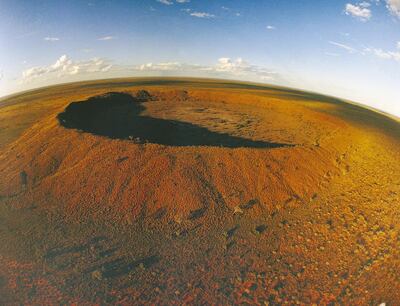
About 880m in diameter, 60m in depth and pleasingly circular in shape, Wolfe Creek Crater was formed by a meteorite impact about 300,000 years ago. While visitors are not permitted to climb down into the crater for safety reasons, they can hike to its rim to enjoy a lofty view of this spectacular formation.
Horizontal Falls
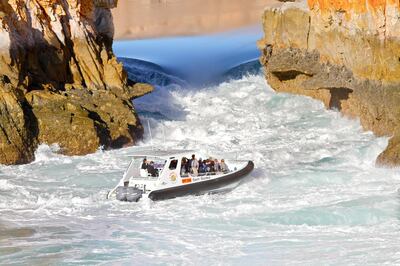
In a remote part of WA's north-west occurs what natural historian David Attenborough described as "one of the greatest natural wonders of the world". Between two narrow cliff gaps in the McLarty Ranges rush the pristine waters of Talbot Bay, creating a what has been described as a "horizontal waterfall" of up to 5m in height. This occurs when a strong tidal current forces the bay's water through these gaps, causing a build-up of water on one side, and triggering the waterfall effect. The first gap is about 20m wide, and the second gap is only half that width again, creating an even greater imbalance between the height of the water on each side of this passage during high tide.
Wave Rock
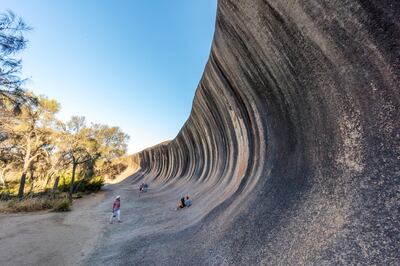
WA is world-famous for its surfing locations, yet one of its largest waves is 200km from the nearest ocean. Long before Instagram existed, Wave Rock was WA's go-to location for quirky travel photographs.
For decades, tourists have been posing at the base of this 110m-long, 15m-tall rock formation, which looks like a perfectly shaped ocean wave that is set to explode into the trees that surround it. Wave Rock is particularly spectacular between July and October, when the forest around it is cloaked in colourful wildflowers.
The Pink Lakes
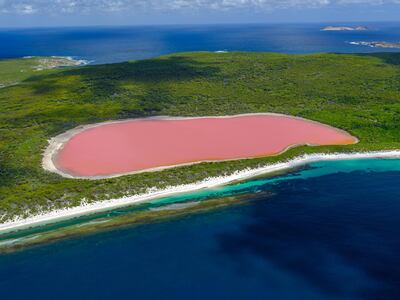
At first glance, it looks like a viral marketing stunt, as though a company has dyed a lake fluorescent pink to gain attention. But there are two pink lakes in WA, and they're both the result of extremely high salinity levels in their water. On Middle Island, 120km east of the town of Esperance, Lake Hillier is all the more breathtaking as it is flanked by a flawless white-sand beach and the deep-blue waters of the Indian Ocean. Hutt Lagoon, about 80km north of Geraldton town, is much larger than Lake Hillier, but its pink colour is less pronounced. Both have become major social media photography destinations.
The Pinnacles
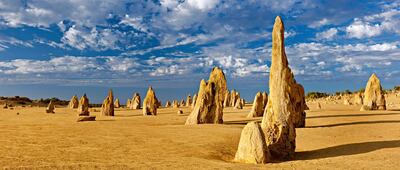
Throughout a vast field of sand, 150km north of Perth, is a forest of thousands of limestone spikes, some up to 5m tall. About 30,000 years ago, the ocean receded from this location, leaving behind stacks of condensed seashells that were hidden beneath the sand. Then, over the many years to come, the elements gradually swept away the sand to reveal these limestone pillars. Greatly varied in size and shape, together they have formed what feels like a massive outdoor sculpture gallery.
Hamelin Pool
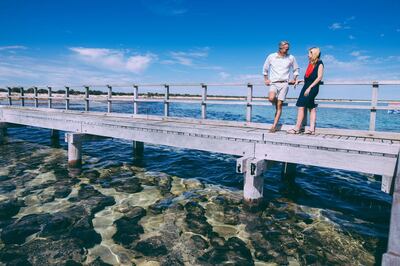
They are the oldest living fossils on Earth, evidence of life on this planet stretching back 3.5 billion years. In the crystalline ocean waters of Hamelin Pool, near popular tourist destination Shark Bay in WA's Gascoyne region, is an enormous collection of living marine stromatolites.
These fossils, which grow only 0.33 millimetres per year, exist in only a handful of locations in the world, and the largest collection is at Hamelin Pool. Visitors can have a close-up look at these ancient fossils by strolling along a boardwalk that passes over the formation.
The Valley of the Giants
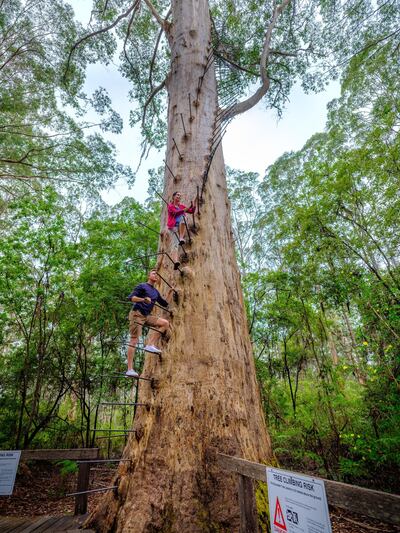
One after the next, towering trees reach towards the sky. Their trunks are almost impossibly thick, measuring as much as 22m in circumference, equivalent to the combined arm spans of about 12 men. Some are so tall that their crests disappear from view, obscured by the forest canopy as they stretch more than 70m into the air.
This is the Valley of the Giants, a sprawling forest in WA's deep south that is home to some of the world's biggest trees. Karri and red tingle trees are naturally gigantic. There are few places on the planet where they grow larger than here, in the untamed Walpole-Nornalup National Park, about five hours' drive south-east of Perth.
